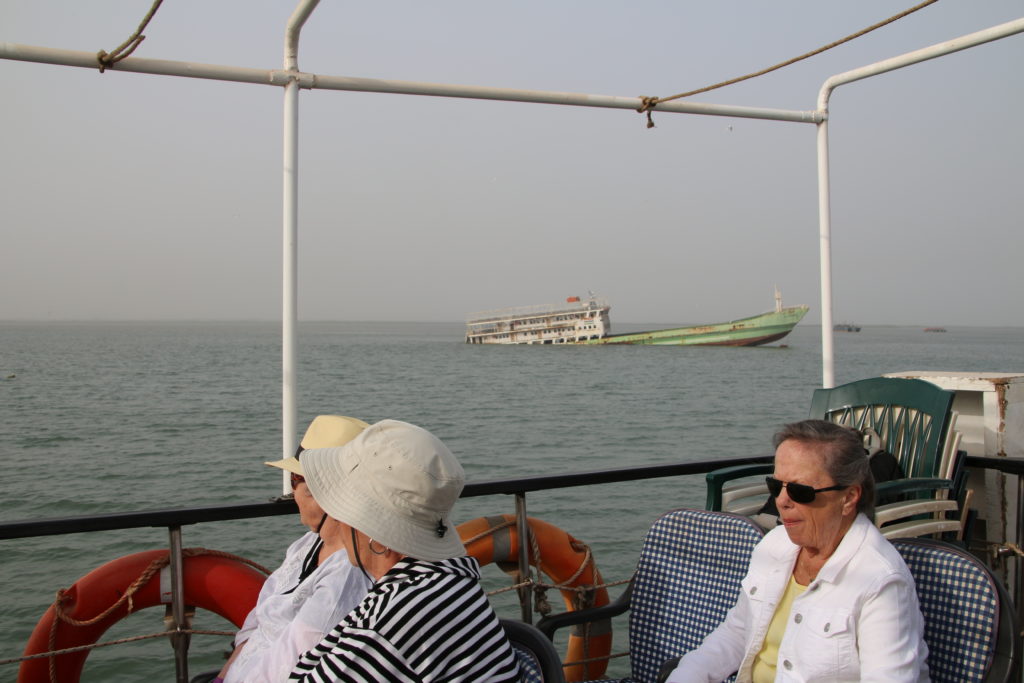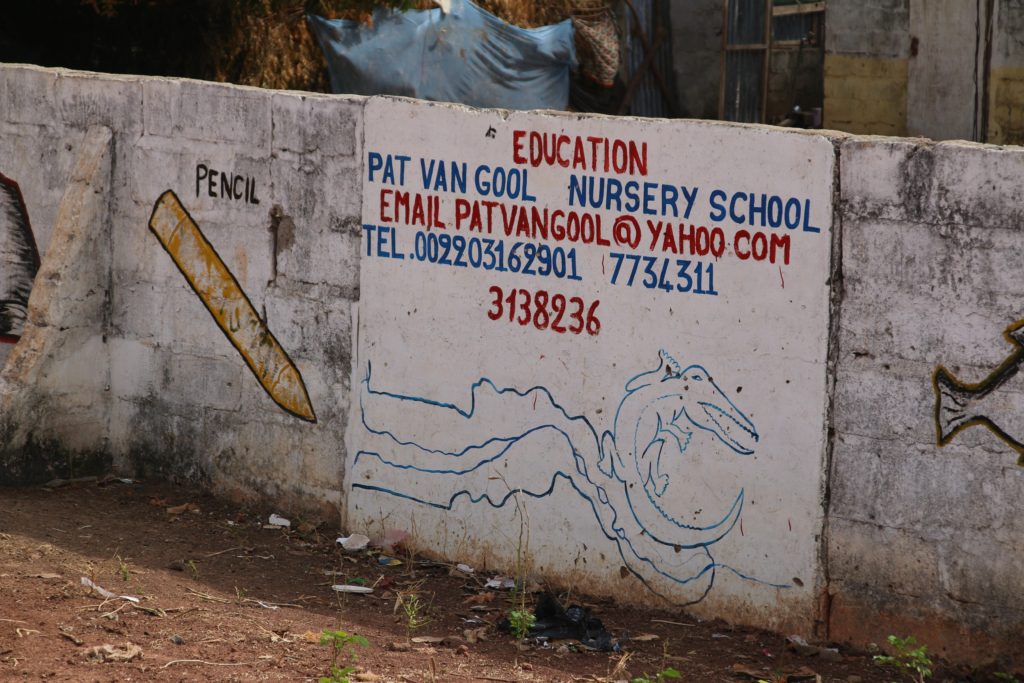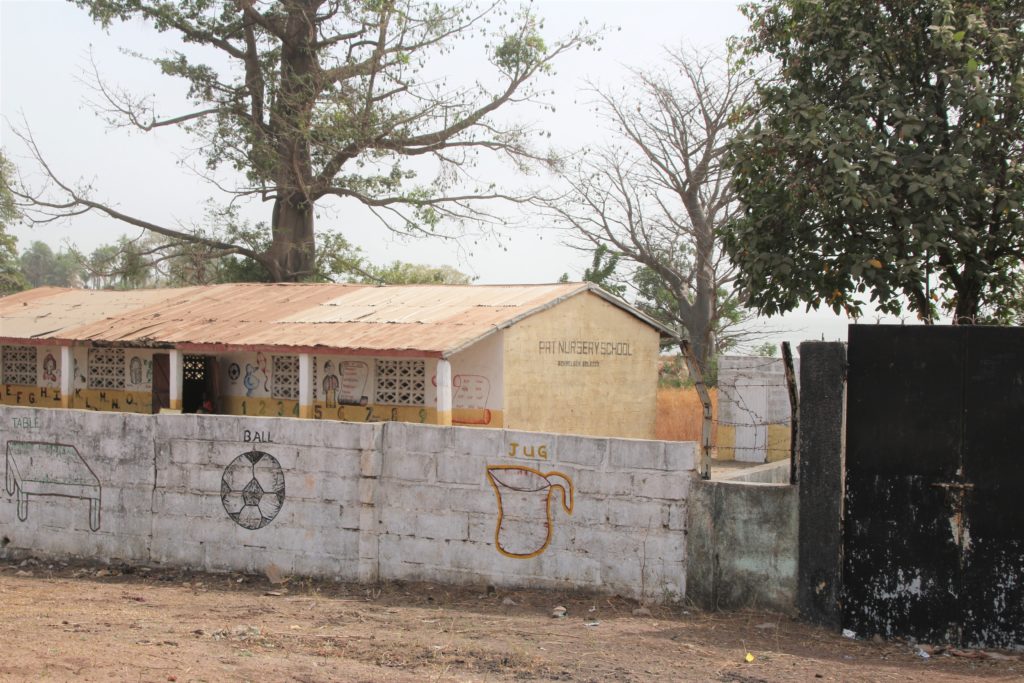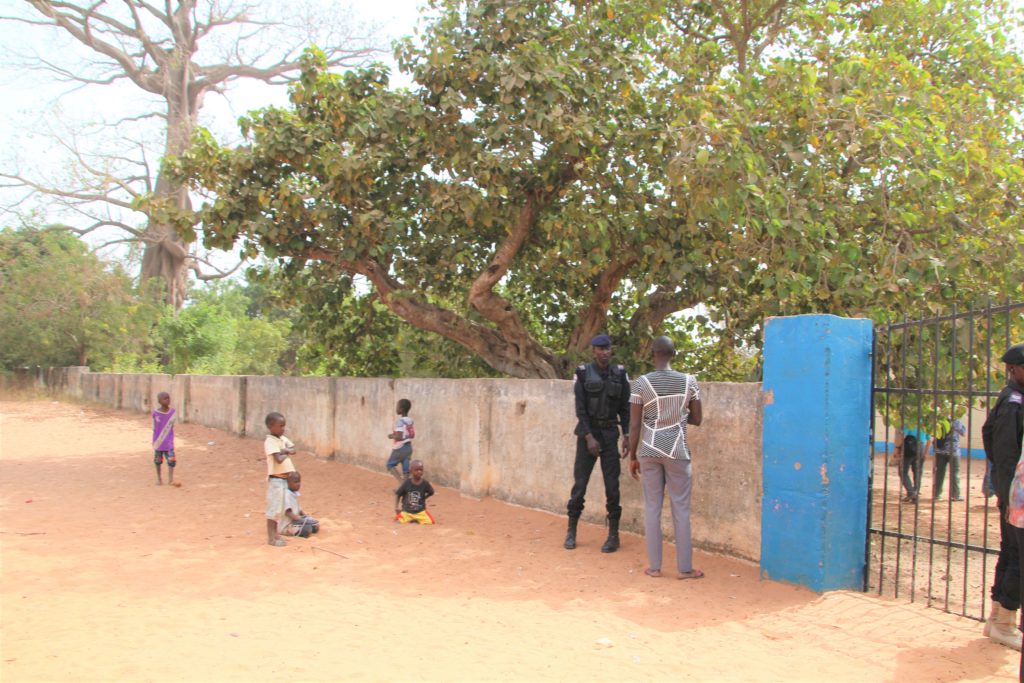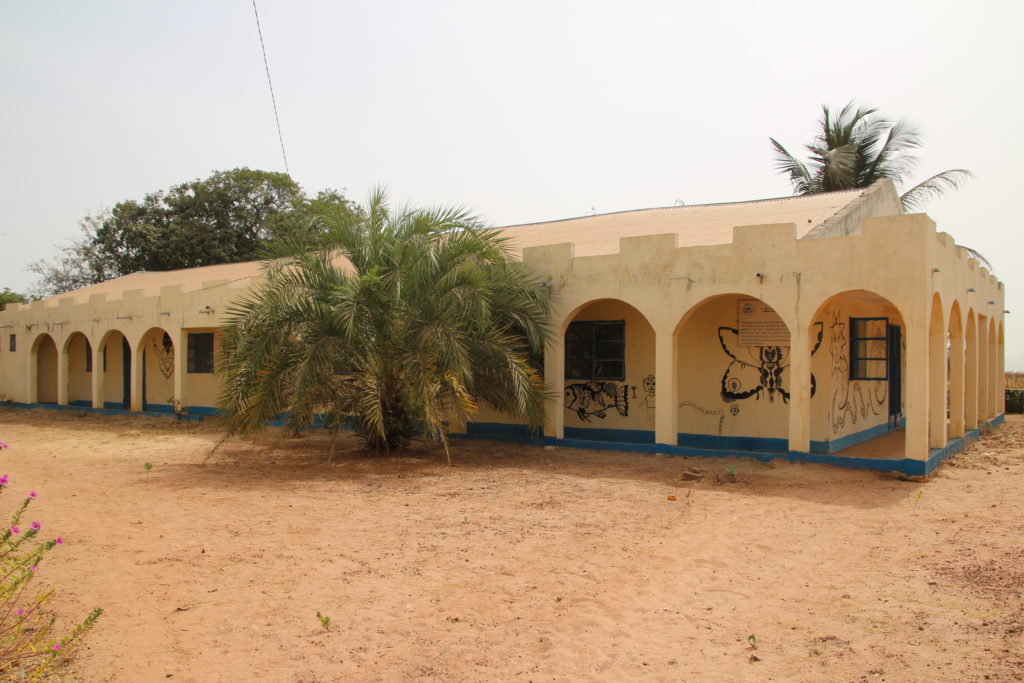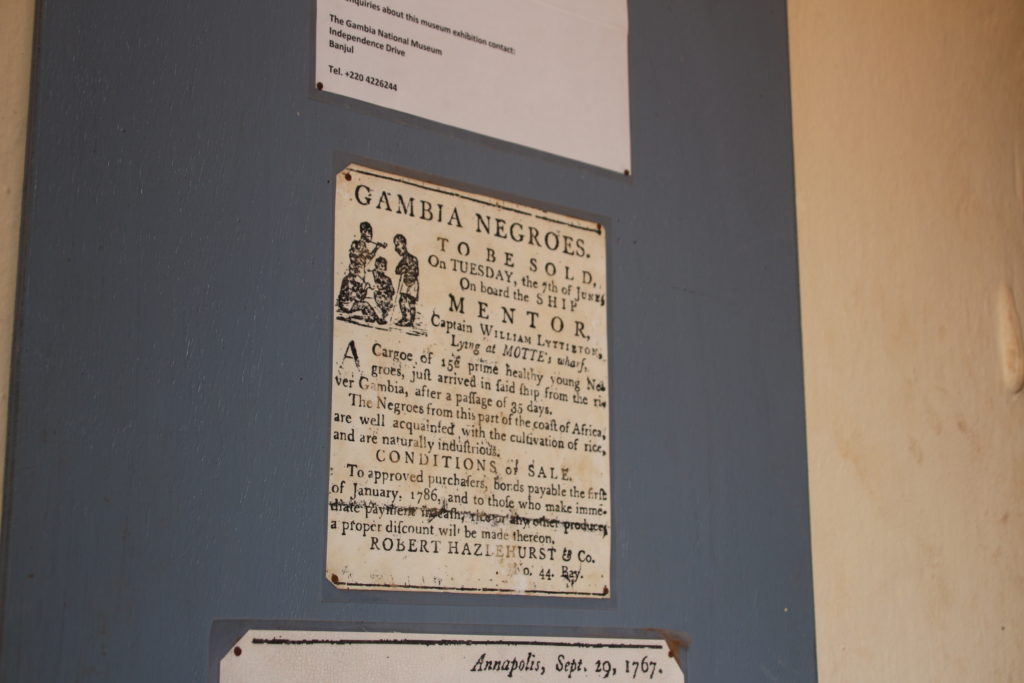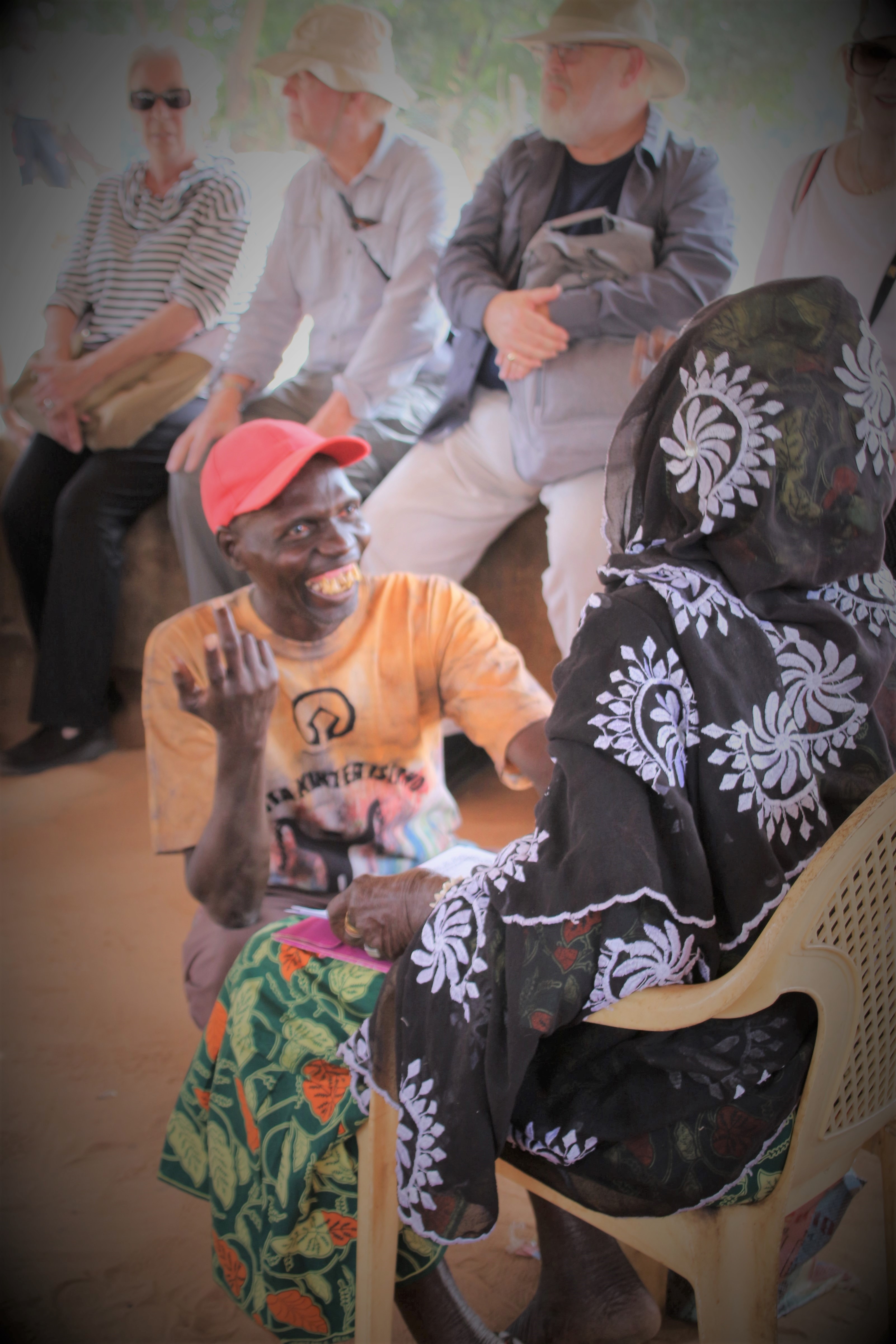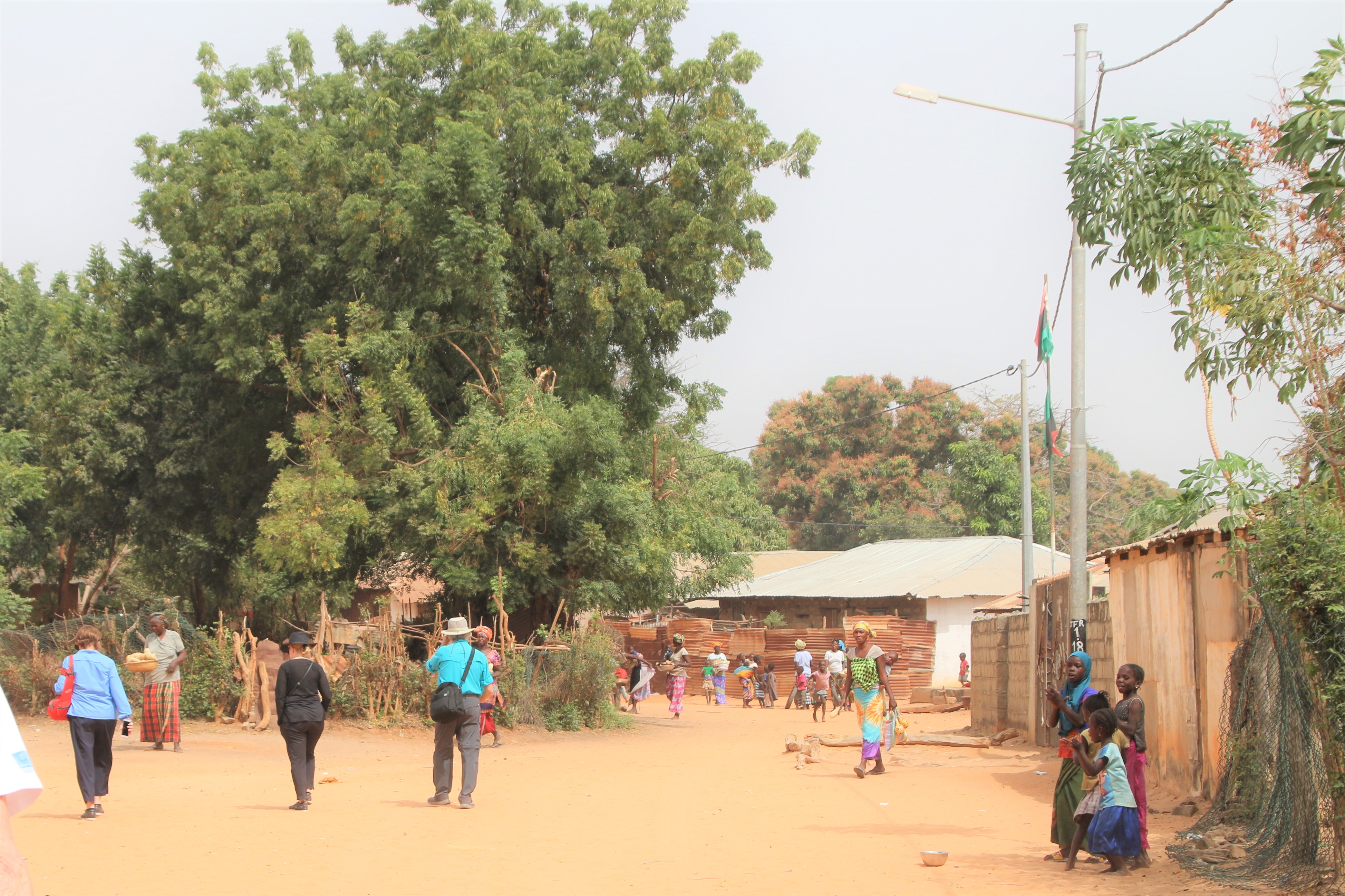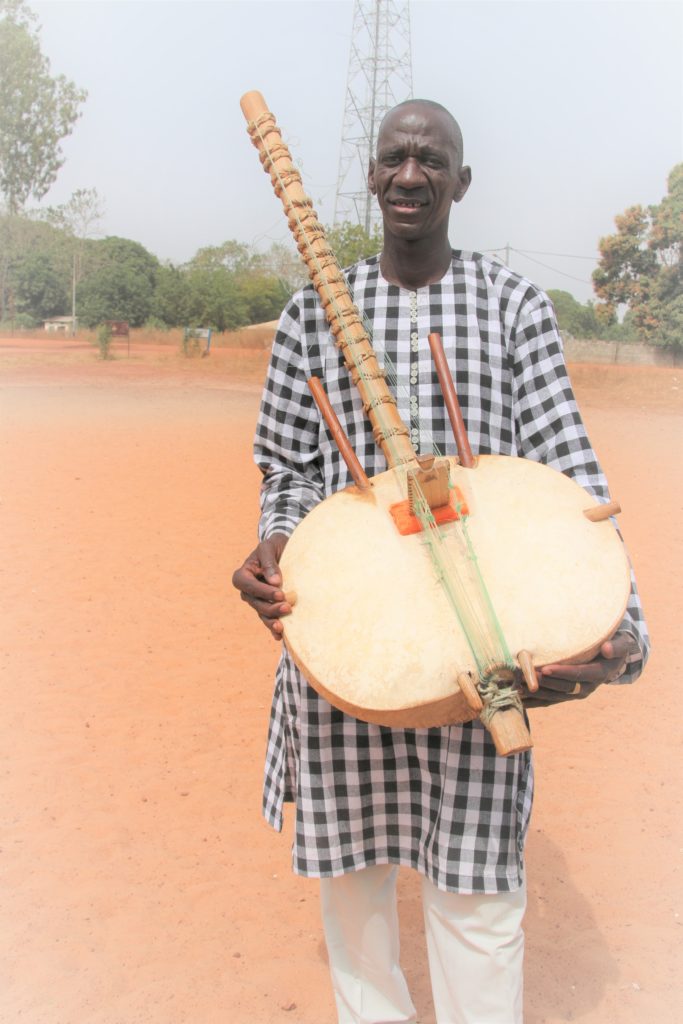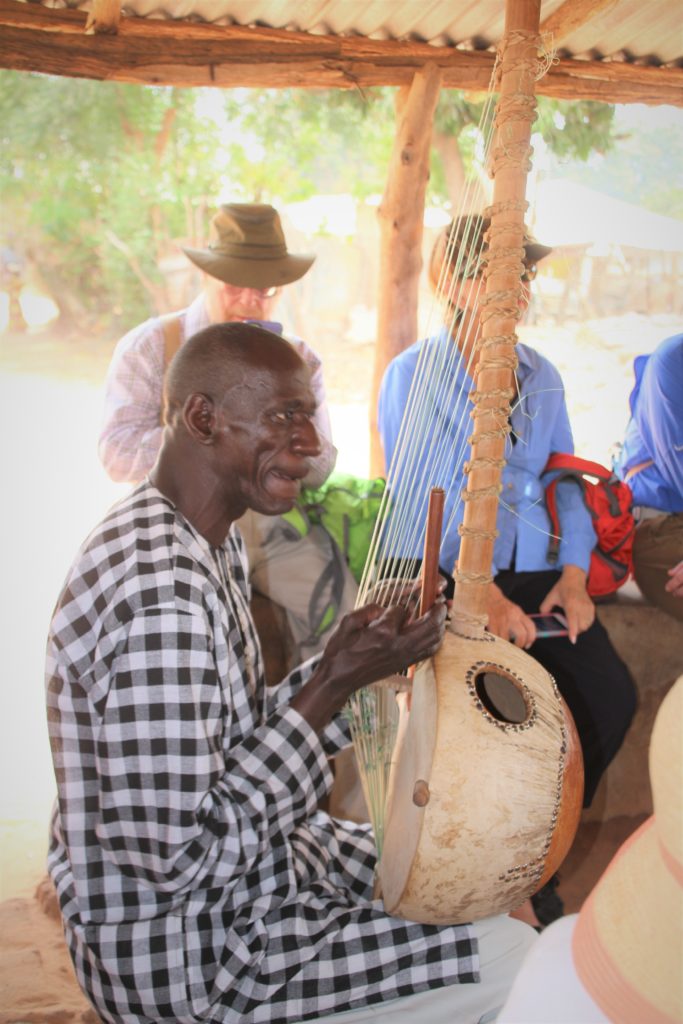Da Gambia is a small independent country completely surrounded by Senegal except for its western border. which is the Atlantic Ocean. It is even poorer than its larger neighbor Senegal. In the past, it too was an active port for the slave trade and other commodities. Like most countries in Africa it was eventually colonized successively by several European countries. As we learned in several lectures on ship-board, there was an infamous conference in Berlin in which Africa was divided among the several European countries. What had been various African ethnic groups were arbitrarily established as colonial territories without consideration of culture or language. The French got what is now Senegal. The British focused on land on both banks of the Gambia River which runs right through Senegal. When the two colonies became independent, they shared many elements of traditional culture but differed significantly in their colonial heritage. So the Senegalese speak French, tend to be Catholic Christians, and drink coffee. Da Gambians (after the river) speak English, tend to be protestant when Christian, and prefer tea. Each sometimes denigrates the other’s “Britishness” or “Frenchness”.
When Alex Haley wrote his famous book, Roots, he told of tracing family legend a from current living family, all the way back to the village where his teen aged ancestor was kidnapped and then sold into slavery in the United States. Allegedly this village still exists in Da Gambia. I joined about 30 of my fellow travelers on a visit to this village, which in astute marketing, has renamed itself Kunta Kinte Village after Alex Haley’s relative..
It is about 6 miles up the Gambia river, which is a very broad but shallow river. There were derelict boats run aground in places along the way. Our guide told us that it is about 10 meters deep but in some places it was too broad to see either shore. The currents are affected by sea tides and dolphins sometimes played along side our boat. It took about 2 hours to go that 6 miles and even longer to get back. I don’t know if that was the fault of the current or of the old but seemingly sound boat.
The village was a poor place, but it was clean and there was no suggestion of poverty to the extent of hunger. Our guide told us that about 4000 people live there permanently. It was my impression that at least 2000 of them were children under the age of 10 who came out to greet us. They were cute and endearing. They offered to pose for a sweet picture and then demanded a dollar per shot. Slender young women in traditional dress with beautiful babies slung on their backs did likewise. Or they implored, “Something for my baby?” There were hundreds of them. We were escorted around the village by armed security. Some of us asked if the children should be in school. We were shown two school buildings and told that “Today is a school holiday”. Our on-ship, lecturers had asked that we not give the children candy since they had little access to health or dental care. Adults among the children offered writing pads and pencils for sale, which we could then donate to their schools. You purchased the school supplies and then “donated” them to a child. Around the corner the very same adult approached you about buying the very same supplies again.
We went to the Roots Museum. There was no admission fee or it had been paid in advance by the tour operator. The museum was 2 rooms with reprints of various black and white photos. I took a few pictures before I was told that photos of the photos were not allowed unless I cleared with the museum docent first. I went to the docent who told me he would allow it for the small fee of $4. I gave it consideration, but concluded that the money likely did not go to support the museum, but to the docent himself. I decided to not take anymore photos.
They took us to a community center, which is an open thatch roofed building with audience seating. There, several men brought in a very old woman and introduced her as Alex Haley’s oldest surviving relative, perhaps a fifth cousin twice removed. For $5 we could take a selfie with her and get a genuine photo copied “certificate of authenticity” stating that she is related to Alex Haley, who himself passed away nearly a decade ago. I was sceptical but considered paying the fee, until I asked one of the old woman’s handlers, “Who benefits from the money given?”. He told me that it was hers alone…but she did have certain expenses to cover and she could decide how to dispense it. She did receive a fair amount in cash donations. They next took us to an identical community center and different men introduced two slightly less elderly ladies who were the next oldest living relatives of Alex Haley. They accepted donations but they did not offer certificates of authenticity.
As we walked in the village children and mothers swarmed me. If I made a the slightest gesture towards my fanny pack/ purse small children tugged at my clothes, reached out and begged for money.
The exception was a tall slender man who accompanied our walk while serenading us with sonorous music. He added beacon of calm to a chaotic situation. He was happy to pose for a picture and show his extraordinary stringed instrument. Though he asked for no money, I was happy to give him a gratuity.
We finally left Kunta Kente village for the slow ride back to the ship. The tour guides on the slow boat prepared an abundant meal for us and served beer and wine. There was a variety of well prepared dishes. They encouraged us to come back for seconds and even thirds, because they did not want to waste food.

For reasons just stated my photos at this destination are relatively limited. I took them mostly at a distance and generally tried not to focus on individuals. Of course people have a right to decline photos, but I felt uncomfortable with their constant demands for cash. After we left the village one of the security guards told some of us that some of the mothers and children don’t actually live in the village but came there because they heard that a cruise ship had arrived. Once comfortable again on my luxury ship, I was left with conflicting feelings. At very best these were not wealthy people. Yet I resented their efforts to get money from me.
Linda

